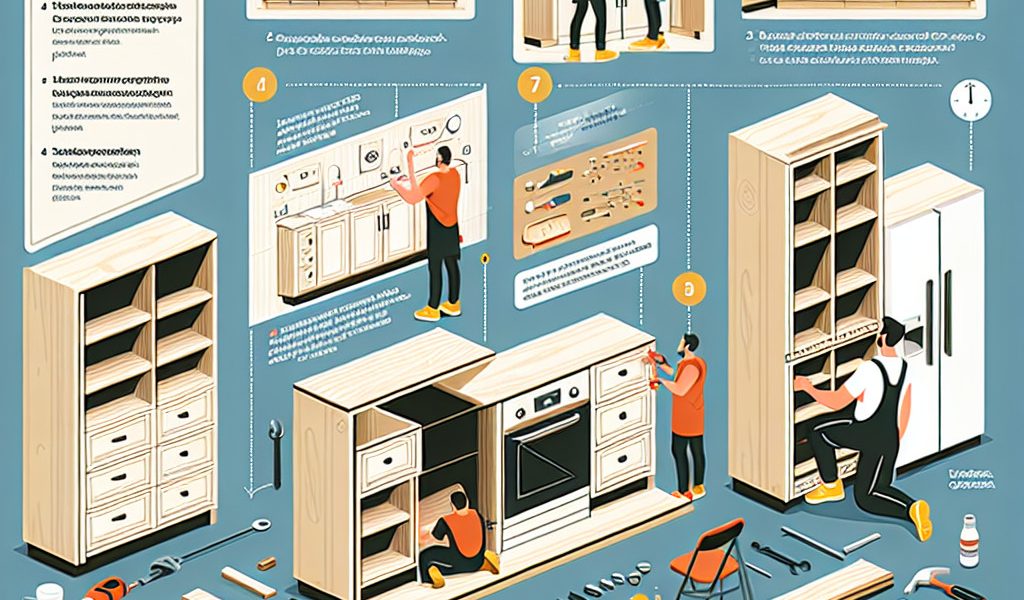Master the Art of Kitchen Splashback Installation: A Beginner’s Step-by-Step Guide and Expert Tips
Do you want to give your kitchen a facelift without embarking on expensive work? Installing a splashback is the ideal solution! In addition to being aesthetic, it protects your walls from projections and makes cleaning easier. Follow our step-by-step guide to learn how to install a kitchen splashback, even if you’re a beginner DIYer.
1. Choose the material for your splashback
First of all, you must choose the material that will best suit your needs and the aesthetic you want to bring to your kitchen. The most commonly used materials are:
- Plastic: easy to cut and economical
- Stainless steel: resistant and modern
- Glass: design and bright, but requiring professional cutting
- Earthenware or ceramic: traditional and easy to maintain
2. Trace the plan of the splashback on the wall
Take a spirit level, a well-sharpened pencil and the plan of your future splashback (which you will have previously drawn taking into account the exact dimensions of the wall). Carefully trace the contours on the wall, regularly checking the horizontality and verticality using the spirit level. Don’t forget to take into account cutouts for electrical outlets and other items specific to your kitchen.
Advice : To help you in this step, do not hesitate to use images licensed by Fotolia which perfectly illustrate how to draw a splashback plan on a wall.
3. Cut out the splashback
Depending on the material chosen, the cutting can be done by you or require the intervention of a professional:
- For plastic: use a jigsaw with a suitable blade, scrupulously following the contours traced on the material
- For stainless steel: call a professional for precise, burr-free cutting
- For glass: entrust the cutting to a glazier or to the manufacturer of your splashback
- For earthenware or ceramics: if you opt for individual tiles, cut them with special tile cutting pliers; otherwise, follow the same advice as for plastic
4. Prepare the wall before installing the splashback
It is essential that your wall is clean and dry before installing your splashback. Also remember to check that it is straight and regular. If necessary, fill in any irregularities with a smoothing coating. Finally, lightly sand the wall to help the glue adhere.
5. Place the splashback blank
Before permanently gluing your splashback, carry out a blank installation by placing it against the wall and checking that the cutouts correspond to the elements of the wall (electrical sockets, etc.). Feel free to make adjustments if necessary.
6. Stick the splashback on the wall
Now that everything is ready, all you have to do is stick your splashback:
- For light materials (plastic, earthenware), apply a special interior wall glue to the entire surface of the material and place it against the wall, pressing firmly to remove air bubbles.
- For stainless steel or glass: instead use a putty adhesive suitable for these materials; apply evenly spaced blocks of putty to the back of the splashback then press it against the wall using uniform pressure
- Allow to dry according to the manufacturer’s instructions before using your kitchen normally.
Advice : If you have chosen individual tiles for your splashback (earthenware or ceramic), proceed in stages: start by laying the tiles in the center and gradually move up towards the edges, making sure to respect the spacing between each tile. Don’t forget to make the joints with a specific mortar.
Conclusion
Installing a kitchen splashback is an operation accessible to beginner DIYers, provided they scrupulously follow the steps described in this guide and are precise in the layout and preparation of the wall. With a little patience and application, you will obtain a successful aesthetic result which will highlight your kitchen while protecting your walls from projections.
